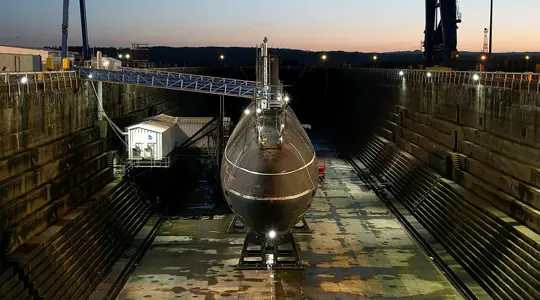How programmes with purpose transform defence delivery
In the rapidly evolving landscape of defence infrastructure, clarity of purpose is a necessity. As Australia undertakes its most significant post-war investment in defence infrastructure through the AUKUS programme, the stakes could not be higher. Its success begins with a simple but powerful principle: purpose before planning.
When programmes lack a clear purpose, decisions become reactive, investments misaligned and delivery fragmented. In contrast, programmes that begin with a well-defined objective create unity, direction and momentum. This is especially true in defence programmes, where clarity of intent is critical.
Purpose before planning
In military planning, an intent statement provides clarity on the why, the how and what success looks like. This principle translates seamlessly into major infrastructure programmes. When teams understand the end goal and what the infrastructure will enable, they can make better decisions, adapt more effectively and deliver outcomes that matter.
Consider the London 2012 Olympic and Paralympic Games. The purpose was clear: to deliver an Olympic Games that would create infrastructure that would benefit the city for generations to come.
This clarity unified efforts across complex systems, from transport to housing and enabled agile decision-making.
Similarly, Sydney Metro in Australia was driven by a vision to invigorate and connect the city. That purpose shaped every aspect of delivery, from station design to community engagement. These programmes succeeded because everyone understood why they were there.
Shifting the delivery mindset
Traditional infrastructure planning often begins with physical assets most commonly buildings, roads and facilities. But this mindset can lead to misaligned investments and fragmented delivery. Instead, programmes should adopt a function-first approach: what outcomes must be enabled and what systems are needed to support them?
Facilities should exist to enable defined outcomes. A naval base, for example, is not just a collection of buildings and infrastructure, it is a system that supports operations, maintenance and readiness. Understanding the required functions should define the infrastructure needed, not the other way around.
This approach aligns with modern asset management principles, which emphasise outcome-driven delivery. It also enables more agile planning, allowing programmes to adapt as needs evolve.
In long lifecycle portfolios like Westport in Australia, where the vision spans 50 years, flexibility is key. We cannot define what ‘good’ looks like in 2075, but we can design and deliver systems that adapt and allow scale.
Designing for adaptability
Too often, programmes are treated as linear projects. In reality, they are dynamic systems made up of interdependent streams including capability, permissions, funding, legal frameworks and more. These elements must progress concurrently and adapt over time.
This systems-thinking approach is essential in defence, where programmes span decades and must evolve with changing technologies, threats and political landscapes.
The Clyde 2070 programme in the UK is not just about building infrastructure, it’s about designing a system capable of supporting future submarine operations. Without a clear understanding of the functional requirements, decisions become disconnected from the end goal.
Similarly, Heathrow Airport’s third runway project demonstrated that capacity could be increased by 30-40 percent without constructing a new runway, simply by rethinking how the airport operates as a system and importantly, having clarity of the programme purpose. These examples show that early system design directly impacts long-term outcomes and scalability.
Empowering teams to deliver
Clarity of purpose must be matched by authority to act. A strong mandate document empowers programme teams to invest, iterate and make decisions aligned with the programme’s intent. It provides the foundation for transformation, especially in complex, long-term portfolios.
The concept of a minimal viable product (MVP) is particularly powerful.
Rather than waiting for full-scale delivery, programmes can release capability in phases. This approach reduces risk, enables learning and allows for continuous improvement.
At Heathrow Airport, phased improvements to terminal operations delivered immediate benefits while supporting long-term goals.
In the defence sector, where programmes often span decades, MVP thinking is essential for identifying inputs, outputs, constraints and resources to guide development over time.
Purpose transforms delivery
In complex defence programmes, success hinges on a shared understanding of purpose. When everyone understands why they are there and what they are delivering, it drives effective decision-making, system design and delivery. Without it, programmes risk misaligned investments, unclear scope and fragmented execution - especially in high-stake environments.
This is particularly important for AUKUS-related infrastructure, where scale and complexity demand a strategic mindset.
A shared understanding of purpose enables collaboration across government, industry and supply chains, ensuring that funding, capability and legal frameworks move in sync. It empowers teams to adapt and deliver outcomes that matter, using systems thinking to navigate evolving challenges.
Just as clarity of intent in military operations, defence infrastructure programmes must be outcome-led, adaptable and designed to evolve. With purpose at the centre, stakeholders can be aligned, supply chains engaged meaningfully and systems built to support long-term capability. Most importantly, this approach ensures that investments like AUKUS can deliver on their promise, strengthening national security and building enduring capability.

